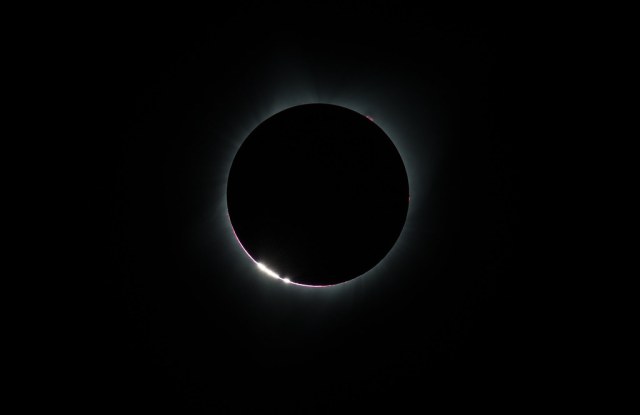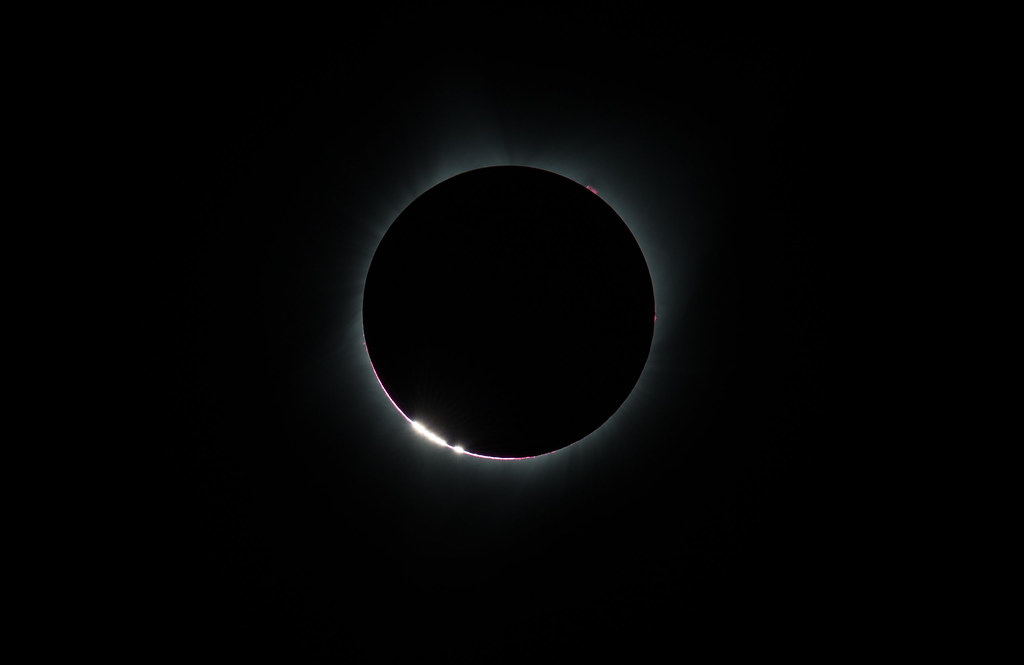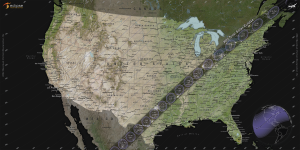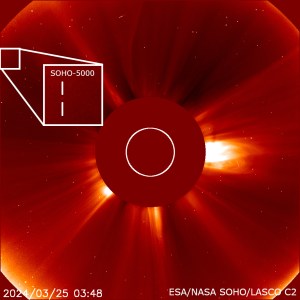Don’t Make Me Wait for April 8!
Can’t wait to see the Moon block the Sun on April 8? Neither can we. But we have good news – if you want to see an incredible cosmic alignment, you can catch one right now! Exoplanets, asteroids, and other objects regularly pass in front of stars and block their light. Observing these events is […]

4 min read
Don’t Make Me Wait for April 8!
Can’t wait to see the Moon block the Sun on April 8? Neither can we. But we have good news – if you want to see an incredible cosmic alignment, you can catch one right now! Exoplanets, asteroids, and other objects regularly pass in front of stars and block their light. Observing these events is easier than you might think – and it can be a fantastic way to contribute to NASA science.

There are three main kinds of cosmic alignments that temporarily block our view of a star. Each one can help us pick out fine details about astronomical objects that can’t be observed any other way.
Eclipse – when one object blocks another that’s apparently similar in size.
Occultation – when a relatively big object completely blocks an apparently smaller object.
Transit – when an apparently small object passes in front of a larger star, blocking some but not all of its light.
You’ll notice that we use the word “apparently” in each of those definitions. That’s because what matters is how big the object looks from our perspective, not how big it actually is.
Now let’s look at some science projects you can get involved in that observe these phenomena.
Eclipses help scientists see faint objects next to bright objects. Just like you might raise your hand to block light from your car’s headlight while you search the ground for your keys, eclipses block the overpowering light from a star so objects around it can be viewed more easily. This is what the Eclipse Megamovie project, the Dynamic Eclipse Broadcast Initiative, and Citizen CATE 2024 are doing: taking advantage of the Moon blocking the fierce sunlight so they can see what’s happening right around the Sun. These projects invite you to help them use this method to study the Sun’s faint corona. Eclipses and occultations can also tell us about the relative sizes and shapes of objects. This is how Sunsketcher will harness the April 8 eclipse. With your help, they will use our precise knowledge of the size and topography of the Moon to vastly improve estimates of the shape of the Sun. At the very beginning and end of totality, viewers will see Baily’s Beads – bright spots of light around the Moon’s edge where rays of sunlight slip through the valleys between the mountains on the Moon’s surface just before and after totality. The SunSketcher app will capture images of these beads along with precise time and location data of each observation. Following the eclipse, the SunSketcher team will use the collected observations to calculate the shape of the Sun.
NASA
When an object transits – or passes in front of – a star, the star’s light dims. Measuring changes in starlight to search for these transits has revealed thousands of exoplanets (planets orbiting other stars) in recent years. You can join the search today! Three NASA citizen science projects are focused on investigating exoplanets using transits.
- Planet Hunters TESS invites everyone to look for traces of transiting planets in the changing light of distant stars. The most promising of these signals indicate “exoplanet candidates” to be confirmed through additional observations. This project, hosted on the Zooniverse platform, can be done on a smartphone or a computer.
- Exoplanet Watch is a community of people who use their own telescopes or a shared community robotic telescope to observe exoplanet candidates to better predict the next time the objects will transit. This project requires an internet-connected computer.
- UNITE, like Exoplanet Watch, is a community of folks using their telescopes to observe exoplanet candidates. This community uses Unistellar telescopes, which operate on a standard, user-friendly system. The UNITE and Exoplanet Watch teams often share data and collaborate!
Whichever events you observe, or whichever projects you choose to contribute to, we’re sure you’ll find yourself marveling at our presence on this wonderful planet in this mysterious universe. You don’t have to wait until April 8!
by Sarah Kirn and Marc J. Kuchner
NASA Citizen Science
Share
Details
Related Terms
What's Your Reaction?



















.jpg?#)







































